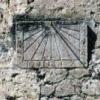StephenBOBJECTIVE: To determine the association, if any, between male-pattern hair loss (baldness) and serum 25-hydroxyvitamin D (25-OHD) levels. DESIGN AND PARTICIPANTS: A cross-sectional study of 296 healthy middle-aged and older men. MAIN OUTCOME MEASURES: Degree of baldness was independently assessed by two researchers using the Hamilton-Norwood scale and serum 25-OHD was measured in all men. RESULTS: Classification of the degree of baldness by the two researchers showed a high level of agreement (kappa = 0.93). Forty-eight per cent of men had no hair loss or mild frontotemporal recession, 15% had predominant vertex loss, and 37% had significant scalp and vertex loss. After data were adjusted for potential confounding factors - including age, month of 25-OHD measurement, exercise levels, use of sunscreen, skin type and frequency of outdoor hat wearing - no significant differences in 25-OHD levels between these groups was detected (P = 0.60). CONCLUSIONS: The degree of baldness does not appear to influence serum 25-OHD levels. The high prevalence of baldness in older men does not explain sex differences in 25-OHD levels. Other novel hypotheses are required to help determine whether baldness serves any physiological purpose.

Hair Loss Prevention
#31
Posted 09 December 2008 - 04:40 PM
#32
Posted 09 December 2008 - 05:02 PM
#33
Posted 09 December 2008 - 06:02 PM
The only thing I found that really works so far is Caffeine shampoo. It's negligibly cheap too. Don't get any special medicated caffeine shampoo either. Just order "Octane Gel" from Amazon. Works great!
Effect of caffeine and testosterone on the proliferation of human hair follicles in vitro.
Fischer TW, Hipler UC, Elsner P.
Department of Dermatology and Allergology, Friedrich-Schiller-University, Jena, Germany. tobias.fischer@derma.uni-jena.de
BACKGROUND: Androgenetic alopecia (AGA) is a common problem in men of all ages, affecting approximately 50% at 50 years of age. The underlying cause is an androgen-dependent miniaturization of genetically predetermined hair follicles. Here, the hair organ culture model was used to investigate the effects of testosterone and caffeine; the latter being a promising candidate for hair growth stimulation. METHODS: Hair follicles from 14 biopsies, taken from the vertex areas from male AGA patients, were cultivated for 120-192 h in vitro with normal William's E medium (control) or William's E medium containing different concentrations of testosterone and/or caffeine. Hair shaft elongation was measured daily and at the end of cultivation, cryosections of follicles were stained with Ki-67 to evaluate the degree and localization of keratinocyte proliferation. RESULTS: Significant growth suppression was found in hair follicles treated with 5 microg/ml testosterone. This was counteracted by caffeine in concentrations of 0.001% and 0.005%. Moreover, caffeine alone led to a significant stimulation of hair follicle growth. These results were confirmed immunohistochemically by Ki-67 staining. CONCLUSIONS: Androgen-dependent growth inhibition of ex vivo hair follicles from patients suffering from AGA was present in the human hair organ culture model, a constellation which may serve for future studies to screen new substances against androgen-dependent hair loss. Caffeine was identified as a stimulator of human hair growth in vitro; a fact which may have important clinical impact in the management of AGA.
Follicular penetration of topically applied caffeine via a shampoo formulation.
Otberg N, Teichmann A, Rasuljev U, Sinkgraven R, Sterry W, Lademann J.
Center of Experimental and Applied Cutaneous Physiology, Department of Dermatology, Charité-Universitatsmedizin Berlin, Berlin, Germany.
AIMS: Follicular drug delivery is the prerequisite for an effective treatment of androgenetic alopecia or other reasons of premature hair loss. METHODS: The follicular penetration of caffeine, applied topically in a shampoo formulation for 2 min, was measured with highly sensitive surface ionization in combination with mass spectroscopy, a selective method for the detection of very small quantities of transcutaneously absorbed substances in the blood. An experimental protocol, developed to selectively block the follicular pathway within the test area, was used. Based on this principle, a clear distinction between interfollicular and follicular penetration of topically applied caffeine was feasible. RESULTS: After 2 min, caffeine penetrated via the hair follicles and stratum corneum. CONCLUSION: It was found that the penetration via hair follicles was faster and higher compared with the interfollicular route and that hair follicles are the only pathway for fast caffeine absorption during the first 20 min after application. Copyright 2007 S. Karger AG, Basel.
PMID: 17396054 [PubMed - indexed for MEDLINE]
Edited by abelard lindsay, 09 December 2008 - 06:05 PM.
#34
Posted 09 December 2008 - 07:00 PM
#35
Posted 09 December 2008 - 07:14 PM
#36
Posted 16 December 2008 - 02:08 PM
Asiasari Extract Grows Hair in Mice and in Human Skin Cells. Another exotic Asian root with possible hair growth properties.
5-Aminolevulinic Acid Increases Hair Growth in Mice. This is the stuff they use in photodynamic therapy to treat cancer (and other skin problems, I guess).
#37
Posted 17 December 2008 - 07:56 AM
But honestly guys, solving hair loss is entirely possible with topical applications that (i) eliminate DHT on the scalp as well as (ii) act as a sort of vasodilator like Minoxidial.
Attack hair loss from both those fronts and you will get significant results like I did. As a suggestion, look at my previous post in this thread re: Nisim products and minox and omega3 & saw palmetto supplementation.
#38
Posted 17 December 2008 - 12:52 PM
#39
Posted 17 December 2008 - 02:11 PM
This is part theory and partly backed up by studies. Topical applied niacin (in some deluted form) may help:
If you have followed the Niacinamide thread you will know that Niacin is one of the precursors of NAD in the cell. Actually it is one of the precursors that when converted to NAD, will not inhibit Sirt1. The upregulation of NAD will activate Sirt1. Activation of sirt1 will restore youtfull gene paterns in the cell. However I surmise this is only effective when applied topically as Niacine is heavily metabolized to Niacinamide when taken orally. Niacinamide it appears does not work for Sirt1 activation.
Ok so far so good. Applied on your head (niacine shampoo, or something that helps the niacin get absorbed) it may restore youthfull gene patterns your skin cells including the hair folicle. Only theory right? but then again...
http://www.ncbi.nlm....Pubmed_RVDocSum
Here is the complete study with some photograph:
http://www.loveyourl...treatmentof.pdf
I just started stealing my wife's Niacin pads just in case of.. he he.
Edited by 100YearsToGo, 17 December 2008 - 02:13 PM.
#40
Posted 17 December 2008 - 03:00 PM
Here is the complete study with some photograph:
http://www.loveyourl...treatmentof.pdf
Those are the best photos they could come up with? The pictures are completely unprofessional, dark, not uniformly lit, out of focus, and the sizes of the before and after pictures appear to be different, and despite all this fudging they do not show appreciable hair gain as far as I am concerned. And that's what the blinded investigator had to work with?
#41
Posted 17 December 2008 - 05:40 PM
Here is the complete study with some photograph:
http://www.loveyourl...treatmentof.pdf
Those are the best photos they could come up with? The pictures are completely unprofessional, dark, not uniformly lit, out of focus, and the sizes of the before and after pictures appear to be different, and despite all this fudging they do not show appreciable hair gain as far as I am concerned. And that's what the blinded investigator had to work with?
He, he . Still have that 600X800 pixel display?
#42
Posted 17 December 2008 - 08:08 PM
Here is the complete study with some photograph:
http://www.loveyourl...treatmentof.pdf
Those are the best photos they could come up with? The pictures are completely unprofessional, dark, not uniformly lit, out of focus, and the sizes of the before and after pictures appear to be different, and despite all this fudging they do not show appreciable hair gain as far as I am concerned. And that's what the blinded investigator had to work with?
He, he . Still have that 600X800 pixel display?
That would be too much! The images are 375x375, and even at that resolution they are obviously out of focus.
#43
Posted 18 December 2008 - 03:14 AM
This was counteracted by caffeine in concentrations of 0.001% and 0.005%.
Wow that's a tiny amount.
Why not just buy the powder http://www.bulknutri...products_id=748 and
add it to your own shampoo? 100mg in my 325ml Shampoo bottle would already
be .03% solution (maybe I'm reading it wrong or my math is off).
Actually, that might make working with the powder a bit difficult.
Maybe it would be better to use a pure 100mg capsule if such a thing exists
(they all seem to have binders).
#44
Posted 18 December 2008 - 09:56 AM
on the melatonin point:
Melatonin increases anagen hair rate in women with androgenetic alopecia or diffuse alopecia: results of a pilot randomized controlled trial.
[My paper] T W Fischer, G Burmeister, H W Schmidt, P Elsner
Department of Dermatology and Allergology, Friedrich-Schiller-University, Erfurter Strasse 35, D-07740 Jena, Germany ASAT Applied Science and Technology, Zug, Switzerland.
BACKGROUND: In addition to the well-known hormonal influences of testosterone and dihydrotestosterone on the hair cycle, melatonin has been reported to have a beneficial effect on hair growth in animals. The effect of melatonin on hair growth in humans has not been investigated so far. OBJECTIVES: To examine whether topically applied melatonin influences anagen and telogen hair rate in women with androgenetic or diffuse hair loss. METHODS: A double-blind, randomized, placebo-controlled study was conducted in 40 women suffering from diffuse alopecia or androgenetic alopecia. A 0.1% melatonin or a placebo solution was applied on the scalp once daily for 6 months and trichograms were performed to assess anagen and telogen hair rate. To monitor effects of treatment on physiological melatonin levels, blood samples were taken over the whole study period. RESULTS: Melatonin led to a significantly increased anagen hair rate in occipital hair in women with androgenetic hair loss compared with placebo (n = 12; P = 0.012). For frontal hair, melatonin gave a significant increase in the group with diffuse alopecia (n = 28; P = 0.046). The occipital hair samples of patients with diffuse alopecia and the frontal hair counts of those with androgenetic alopecia also showed an increase of anagen hair, but differences were not significant. Plasma melatonin levels increased under treatment with melatonin, but did not exceed the physiological night peak. CONCLUSIONS: To the authors' knowledge, this pilot study is the first to show that topically applied melatonin might influence hair growth in humans in vivo. The mode of action is not known, but the effect might result from an induction of anagen phase.
Mesh-terms: Melatonin :: administration & dosage; Hair :: growth & development; Administration, Topical; Adult; Aged; Alopecia :: drug therapy; Double-Blind Method; Female; Human; Middle Aged; Pilot Projects; Support, Non-U.S. Gov't; Treatment Outcome;
Latest citations:
Melatonin and the hair follicle
Tobias W. Fischer 1 , Andrzej Slominski 2 , Desmond J. Tobin 3 and Ralf Paus 1
1 Department of Dermatology, University Hospital Schleswig-Holstein, University of Lübeck, Lübeck, Germany ; 2 Department of Pathology and Laboratory Medicine, University of Tennessee Health Science Center, Memphis, TN, USA ; 3 Medical Biosciences Research, School of Life Sciences, University of Bradford, Bradford, West Yorkshire, England
Correspondence to Address reprint requests to Ralf Paus, Department of Dermatology, University Hospital Schleswig-Holstein, University of Lübeck, Ratzeburger Allee 160, 23538 Lübeck, Germany.
E-mail: ralf.paus@uk-sh.de
Copyright 2007 The Authors Journal compilation 2007 Blackwell Munksgaard
KEYWORDS
anagen • apoptosis • estrogen receptor • hair cycle • hair follicle • hair pigmentation • melatonin • melatonin receptor
ABSTRACT
Abstract: Melatonin, the chief secretory product of the pineal gland, has long been known to modulate hair growth, pigmentation and/or molting in many species, presumably as a key neuroendocrine regulator that couples coat phenotype and function to photoperiod-dependent environmental and reproductive changes. However, the detailed effects and mechanisms of this surprisingly pleiotropic indole on the hair follicle (HF) regarding growth control and pigmentation have not yet been completely understood. While unspecific melatonin binding sites have long been identified (e.g., in goat and mouse HFs), specific melatonin membrane MT2 receptor transcripts and both protein and mRNA expression for a specific nuclear melatonin binding site [retinoid-related orphan receptor α (RORα)] have only recently been identified in murine HFs. MT1, known to be expressed in human skin cells, is not transcribed in mouse skin. After initial enzymologic data from hamster skin related to potential intracutaneous melatonin synthesis, it has recently been demonstrated that murine and human skin, namely human scalp HFs in anagen, are important sites of extrapineal melatonin synthesis. Moreover, HF melatonin production is enhanced by catecholamines (as it classically occurs in the pineal gland). Melatonin may also functionally play a role in hair-cycle control, as it down-regulates both apoptosis and estrogen receptor-α expression, and modulates MT2 and RORα expression in murine skin in a hair-cycle-dependent manner. Because of melatonin's additional potency as a free radical scavenger and DNA repair inducer, the metabolically and proliferatively highly active anagen hair bulb may also exploit melatonin synthesis in loco as a self-cytoprotective strategy.
--------------------------------------------------------------------------------
Received August 19, 2007; accepted September 17, 2007.
#45
Posted 28 December 2008 - 07:15 PM
This was counteracted by caffeine in concentrations of 0.001% and 0.005%.
Wow that's a tiny amount.
Why not just buy the powder http://www.bulknutri...products_id=748 and
add it to your own shampoo? 100mg in my 325ml Shampoo bottle would already
be .03% solution (maybe I'm reading it wrong or my math is off).
Actually, that might make working with the powder a bit difficult.
Maybe it would be better to use a pure 100mg capsule if such a thing exists
(they all seem to have binders).
I just made a poor/lazy man caffeine shampoo:
- One level teaspoon Nescafe instant coffee contains 50mg caffeine
- study used 0,005% caffeine solution
- 444ml johnson baby shampoo weights 1.1 pounds = 500 grams
It follows from the above that adding 2 level teaspoons of instant coffee to a 444ml Johnson baby shampoo bottle, will give you a 0.005 % cafeine solution.
After using it today I must say the created shampoo does not have a strong coffee aroma. It smells pleasant, washes out easily and leaves your hair baby soft. He he...need to send this to the USPTO.
#46
Posted 28 December 2008 - 07:54 PM
I have all my hair but I've been using the same combo and my hair is thicker, fuller and grows in faster. In fact, I'm wearing it kinda long now
Of all these, saw palmetto is preventing additional hair from falling out but silica is what's doing wonders here. It's normally very abundant in hair, thymus, connective tissue....Very good stuff.
Edited by Lufega, 28 December 2008 - 07:56 PM.
#47
Posted 29 December 2008 - 04:52 PM
This was counteracted by caffeine in concentrations of 0.001% and 0.005%.
Wow that's a tiny amount.
Why not just buy the powder http://www.bulknutri...products_id=748 and
add it to your own shampoo? 100mg in my 325ml Shampoo bottle would already
be .03% solution (maybe I'm reading it wrong or my math is off).
Actually, that might make working with the powder a bit difficult.
Maybe it would be better to use a pure 100mg capsule if such a thing exists
(they all seem to have binders).
I just made a poor/lazy man caffeine shampoo:
- One level teaspoon Nescafe instant coffee contains 50mg caffeine
- study used 0,005% caffeine solution
- 444ml johnson baby shampoo weights 1.1 pounds = 500 grams
It follows from the above that adding 2 level teaspoons of instant coffee to a 444ml Johnson baby shampoo bottle, will give you a 0.005 % cafeine solution.
After using it today I must say the created shampoo does not have a strong coffee aroma. It smells pleasant, washes out easily and leaves your hair baby soft. He he...need to send this to the USPTO.
I have now added 25 grams of Niacinamide to this shampoo based on this to create a 5% solution:
Rapid reversion of aging phenotypes by nicotinamide through possible modulation of histone acetylation.Matuoka K, Chen KY, Takenawa T. Institute of Medical Science, University of Tokyo, Japan. kmatuoka@mailhost.net Aging appears to be an irreversible process. Here we report that nicotinamide (NAA) can induce rapid and reversible reversion of aging phenotypes in human diploid fibroblasts in terms of cell morphology and senescence-associated beta-galactosidase activity. Although NAA seems to enhance the replicative potential of the cells, it has little effect on their growth rate and life span, suggesting that NAA action is rather separated from the cellular replicative system. The effects are unique to NAA: none ofthe NAA-related compounds examined (an NAD precursor/niacin, NAD analogs, and poly(ADP-ribose) polymerase inhibitors) exerted similar effects. Thus, NAD-related metabolism and poly(ADP-ribosyl)ation are unlikely related to the NAA action. On the other hand, histone acetyltransferase (HAT) activity was elevated in NAA-exposed cells, while in aged cells, HAT activity and histone H4 acetylation were lowered. Taken together, the results suggest that NAA may cause rejuvenation by restoring, at least in part, altered gene expression in aged cells through its activation of HAT.
Will report in one year! may keep adding stuff if it is backed up by a study.
#48
Posted 29 December 2008 - 05:07 PM
Have you looked at BioSil? It's a choline stabilized silicic acid. If you buy it in solution form, it's not terribly expensive. I take it primarily for bone health, but skin and hair effects are a distinct bonus. That formulation has some positive clinical data behind it. Supposedly it's better than horsetail derivatives; I've not heard of the Hubner product and wonder how it compares to BioSil.but silica is what's doing wonders here. It's normally very abundant in hair, thymus, connective tissue....Very good stuff.
#49
Posted 21 March 2009 - 02:44 PM
#50
Posted 21 March 2009 - 03:49 PM
My dad began balding when he was 18, I'm 20 now and I think that balding slowly has began with me too. My cousin on my mother side has been bald since his early 20s, soo if you could choose 1 supplement to prevent hair loss, what would it be?
For slight initial hair loss, minoxidil.
#51
Posted 22 March 2009 - 06:33 AM
Hence why I think Saw Palmetto oral and topical, combined with Nisim shampoo, is the way to go, long term.
#52
Posted 22 March 2009 - 10:31 AM
#53
Posted 22 March 2009 - 11:11 AM
#54
Posted 22 March 2009 - 12:13 PM
Probably just shooting in the dark but we'll see.
#55
Posted 22 March 2009 - 12:56 PM
#56
Posted 22 March 2009 - 01:16 PM
My dad began balding when he was 18, I'm 20 now and I think that balding slowly has began with me too. My cousin on my mother side has been bald since his early 20s, soo if you could choose 1 supplement to prevent hair loss, what would it be?
For topicals, I'd go for Nizoral. I wrote about these studies on my blog:
Nizoral increases hair growth in men with male pattern baldness
Nizoral increases hair growth more than minoxidil
Ketoconazole increases hair growth in mice
First, dont ever wear a hat. Second, moistuirzie. Third, take supps or drugs to lower testosterone.
Hmm... I think the "wearing a hat will make you lose your hair" theory has been disproved a long time ago. In fact, wearing a hat will protect your scalp (and hair) from photodamage. As for moisturizing, why not, but I've never seen any studies suggesting that keeping the scalp moist will grow back hair or even prevent hair loss. Kind of like moisturizing your face won't keep it from wrinkling. Also, testosterone is not the culprit; it's its conversion to DHT and the androgen receptors that together make up the problem. Lowering your testosterone is probably not a good idea.
#57
Posted 22 March 2009 - 01:18 PM
I'm conducting an experiment if you will on my own hair loss. Alternating nights with retin-a and dmso. Also using saw palmetto.
Probably just shooting in the dark but we'll see.
I was using retinol (which is less effective than retin-a) on my face and it grew some hairs on my temple, so I think there's a good chance that will work. I also read an abstract that said combining minoxidil with retin-a is more effective than minoxidil alone. You might also want to include Nizoral once or twice a week (see the studies I posted in my previous post).
#58
Posted 22 March 2009 - 01:23 PM
I'm conducting an experiment if you will on my own hair loss. Alternating nights with retin-a and dmso. Also using saw palmetto.
Probably just shooting in the dark but we'll see.
I was using retinol (which is less effective than retin-a) on my face and it grew some hairs on my temple, so I think there's a good chance that will work. I also read an abstract that said combining minoxidil with retin-a is more effective than minoxidil alone. You might also want to include Nizoral once or twice a week (see the studies I posted in my previous post).
Yes I've thought about using the minoxidil also.
#59
Posted 22 March 2009 - 01:26 PM
First, dont ever wear a hat. Second, moistuirzie. Third, take supps or drugs to lower testosterone.
That's a seriously old wives tale about the hat. A hat will not only deflect uv rays from zapping your scalp and hair, but will also help deflect some rays from hitting your face.
#60
Posted 22 March 2009 - 01:36 PM
Minoxidil doesn't fix the underlying problem which is DHT buildup in the scalp. Minox, as a vasodilator, just makes the growth phase of the hair longer than usual. The fact that there is a DHT damaged follicle will mean that the minox will ultimately be unable to save the hair, and it will fall out, or thin, evenutally.
Agreed, but as long as Minoxidil remains effective, one can delay more risky treatments.
By the way, although the mechanism of action of minoxidil is not yet completely understood, its hair growth effect is not (or no longer) thought to be because it is a vasodilator.
Hence why I think Saw Palmetto oral and topical, combined with Nisim shampoo, is the way to go, long term.
Saw palmetto is an example of a more risky treatment, since it messes with hormones (depending on the dose, even topical SP can affect systemic DHT). Many people have reported some of the same dreaded side effects from SP as from finasteride. In both cases both the beneficial effects and the side effects are believed to be a result of DHT lowering. So a dosage of SP that lowers DHT enough to have a beneficial effect on hair is likely to have as many side effects as an equivalently beneficial dosage of finasteride.
One approach worth trying would be to attempt to suppress DHT in the scalp by a topical that does not suppress DHT systemically too much. I am currently experimenting with topical finasteride to try to find the right dose for this with the help of hormone tests. Surprisingly, even 1/60 mg per day of finasteride in solution applied to the scalp appears to suppress systemic DHT by 50% in my case. That is 1/60 th of the daily oral dose prescribed for hair loss. This makes me think that the usual oral dosage of 1mg may be hugely excessive for many people.
0 user(s) are reading this topic
0 members, 0 guests, 0 anonymous users

















































